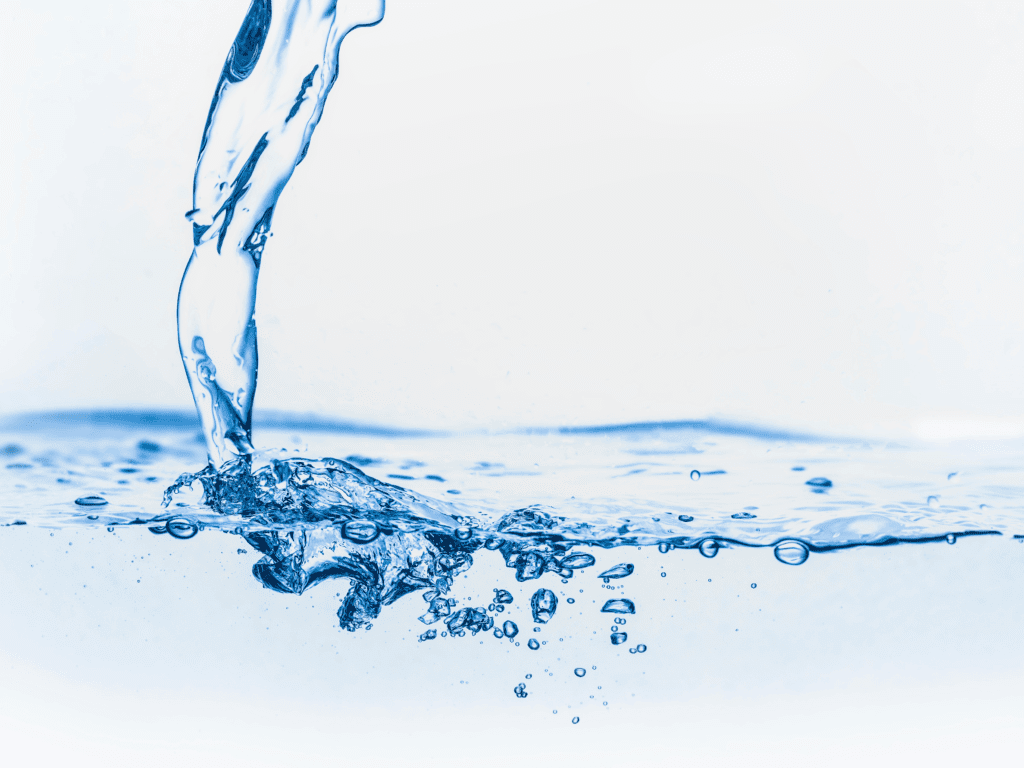More than 60 million Americans are exposed to unsafe tap water each year.
The odds are getting worse. A 2017 report card from the American Society of Civil Engineers gave the nation’s drinking-water infrastructure a rating of D and assessed that the U.S. needs to invest $1 trillion in the next 25 years for upgrades. The alternative is more erosion, not by water but by the damage that occurs in its absence. Then add on the fact that the Environmental Protection Agency (EPA) has a database with 86,153 toxic chemicals, and they monitor only 90 of those. So when your City’s water has a “passing grade”, the EPA is not considering
the 86,063 contaminants that have a “no legal limit”.
What is a Life Water Report?
The United States Environmental Protection Agency (EPA) publishes annual reports on water quality from regional water suppliers. A Consumer Confidence Report (CCR) is a report that identifies the source of drinking water, and the levels of only 90 contaminants of the 86,153 in the EPA’s database. This information about the quality of your drinking water from Consumer Confidence Reports (CCRs) is USELESS!
The Life Water Report assesses drinking water quality in the United States by identifying potential hazards, organic contaminants, and organic sediments. We do NOT let the “no legal limit” rating block us from the Truth! You can learn how drinking water quality affects your health from the information included in your report. It is possible that the water you use contains harmful germs, chemicals, and other contaminants. Among these contaminants are arsenic, lead, fluoride, and many other dangerous chemicals. Water utilities, local health departments, or other government agencies such as the EPA typically issue water quality reports. Go to www.LifeWaterReport.com and find out what’s really in your water. You can then make informed decisions about how to treat your water.

What Does a Life Water Report Analyze?
Life Water Report actually analyzes the EPA Mandated water report that your City issues. Remember that the EPA only monitors 90 of the 86,153 toxic chemicals. We work with the Environmental Working Group and analyze the “no legal limit” toxic chemicals and look at what the actual limit is for the toxic chemical to cause health damage. We then provide a “multiplier” so you have a frame of reference. Example: We look at Carlsbad, California 92011 and see that there are 33 Total Contaminants, of which 15 are known to cause cancer. We pick the first toxic chemical, arsenic, and show that the potential effect is: cancer. And then show you the arsenic level is 700 times more than the EWG Health Guideline recommends. The EPA claims the ”safe” level is 2.8 ppb, but research has shown that it is actually 0.004. So the EPA says your body can handle 10.0 ppb, and they set these high
limits so the contaminated City water can pass their safety limit.
Drinking water quality reports analyze the following parameters:
This Fact Sheet explains the terms often appearing on drinking water analysis reports. Tables showing the EPA Maximum Contaminant Levels (MCL) and Secondary Drinking Water Regulations (SDWR) for some analytes are on the back of this sheet. MCLs are the highest contamination level allowed in drinking water. SDWRs are non-enforceable Federal guidelines regarding cosmetic or aesthetic effects.
Microbial contaminants:
Water is tested for bacteria and parasites that cause illness. A coliform test indicates if human or animal waste contaminates a drinking water supply.
pH: Health problems can occur if the pH is less than 6.5. Most municipal water supplies are adjusted at 7.0 or above. Highly acidic water can dissolve metals from pipes, pumps, and fixtures. For drinking water, SDWR recommends a pH range of 6.5 to 8.5.
Hardness: “Hard water” refers to water containing excessive amounts of calcium and magnesium. In pipes and water tanks, hard water can cause scaly deposits that are not harmful to health. The hardness of water should not exceed 500 mg/l and should be below 150 mg/l.
Electrical conductivity (EC) and total dissolved solids: TDS in water supplies can be calculated using electrical conductivity (EC), which measures the concentration of soluble salts in mmhos/cm. An EC of more than 0.78 is not recommended for human consumption. The total dissolved solids in water should not exceed 500 mg/l.

Inorganic compounds:
- A high concentration of nitrate can be fatal to infants and a threat to young farm animals. High levels may occur near manure piles, fertilized fields, or subdivisions using septic tanks. Levels should not exceed 10 mg/l Nitrate (N) or 1 mg/l Nitrite (as N).
- Maximum Contaminant Levels:
- Arsenic (As)10 ug/l ,
- Fluoride (F)4 mg/l ,
- (Cd)5 ug/l,
- Lead (Pb)15 ug/l
- Copper (Cu)1300 ug/l
- Mercury (Hg)2 ug/l
Secondary Drinking Water Regulation Levels
Chemical contaminants: Toxic organic substances refer to compounds such as insecticides, pesticides, solvents, detergents, and disinfectants that degrade water quality and pose a danger to human health. Water is tested for a wide range of chemicals, such as pesticides, herbicides, industrial chemicals, and heavy metals.
- Chloride (CL) 250 mg/l.
- Sulfate (SO4) 250 mg/l.
- Iron (Fe) 0.30 mg/l,
- Zinc (Zn) 5 mg/l,
- Manganese (Mn) 0.05 mg/l. Iron and manganese are often present together. They may cause rusty water, stains, and deposits, and affect water’s taste, but they are not health hazards.
Physical water quality parameters:
They are determined by the senses of sight, smell, taste, and touch. The physical parameters include temperature, color, taste, odor, turbidity, and solids dissolved in the water.
Our water quality report typically includes a summary of the test results and an explanation of what the results mean. It will also include any required or recommended actions that consumers should take if the water contains contaminants above the EPA’s MCL or if the water is not meeting other quality standards. In the presence of harmful solids, turbidity, temperature, color, taste, odor, electrical conductivity, and dissolved oxygen content of water are affected.
Color in water may be caused by minerals such as iron and manganese or by vegetable substances such as algae and weeds. Color tests indicate the water treatment system’s efficacy.
Turbidity in water is caused by suspended solids and colloidal matter. It may be due to eroded soil caused by dredging or micro-organism growth. High turbidity makes filtration expensive. If sewage solids are present, pathogens may be encased in the particles and escape chlorine action during disinfection.
Odor and taste are associated with the presence of living microscopic organisms; or decaying organic matter including weeds, algae; or industrial wastes containing ammonia, phenols, halogens, and hydrocarbons.

Benefits of Using a Life Water Report in the United States
Water quality’s importance is its assurance that end-users will remain healthy and well-functioning if proper standards are maintained. The quality of water is crucial to economic, health, and social well-being. To maintain reliable and safe water sources and eliminate potential health risks associated with contaminated water, it’s very important to monitor the quality of your water and test it regularly.
Ensure clean and safe drinking water: The primary benefit of using a water quality report is to ensure that the drinking water in your area is safe and free of harmful contaminants. The report provides information on the levels of various pollutants and contaminants, allowing consumers to make informed decisions about their water use and treatment needs.
Peace of mind. You’ll know for sure if there’s anything wrong with your water and its quality without a doubt. Then, you can either relax or address the issue found with the test.
Raise awareness about water contaminants: By providing information about the quality of the water supply, the report can educate consumers about the importance of protecting this vital resource. Your water will be tested for a wide range of contaminants when you have it tested privately. There are different standards and tests for every water treatment plant. You will know that your water’s quality has been thoroughly analyzed when you test it yourself.
Support decision-making: Water quality reports can be an effective tool for decision-making, particularly for those concerned about the potential health effects of contaminants in the water. The report can help consumers make informed decisions about water treatment options, water filters, and other measures to improve drinking water quality.
Improve public health: By providing information about the quality of the water supply, water quality reports can improve public health by reducing exposure to harmful contaminants. This is particularly critical for vulnerable populations, such as pregnant women, young children, and people with compromised immune systems. Interested in how water quality test labs can help your peace of mind? The Life Water Report is here to assist you.

How Is a Life Water Report Used to Improve Health and Well-Being?
Specifically, good water quality is characterized by its lack of impurities, i.e., contaminants, and it has a proper balance of alkaline minerals and a reasonable TDS of 50 to 150.
Drinking enough water and staying hydrated can be encouraged by water quality reports. The report can help consumers feel more confident in their water choices, thereby encouraging them to drink more water and stay hydrated.
Health and well-being can be improved with regular water report analysis (www.LifeWaterReprot.com), and proper maintenance of plumbing and water treatment systems, among other preventative measures. In addition, high-quality healthy water can have a greater impact, so we recommend you find a water system that adds healthy alkaline minerals, or a water ionizer that created ionized, alkaline, antioxidant water. Look at the “filter information” section on www.LifeWaterReport.com. By drinking healthy water, the body is prevented from dehydrating, which can have both physical and mental effects.
- Our skin condition is also improved when we drink water, as is our physical performance and brain function, as is our energy level.
- Water also helps us flush out toxins and bacteria through the bladder. Additionally, it helps with hangovers, headaches, depression, and productivity.
- Electrolytes, such as calcium, magnesium, potassium, and sodium, are also present in water and play important roles in several body functions.
Water quality reports can encourage healthy habits, such as drinking enough water and staying hydrated.
Where to Get Your Own Life Water Analysis Report?
Water reports are official documents released by a water utility, usually annually. You do not want to use the EPA Mandated Water Report, what you want is a qualified analysis of that report. Remember that the EPA monitors only 90 of these 86,153 toxic chemicals so when they say your water is okay, that is for only those 90 Toxic Chemicals – so find out about those other 86,063 Toxic Chemicals and how they damage your health!
Here are some steps to getting a water report:
- Obtain the water report: You can usually obtain a copy of the water report from your local water utility or the Environmental Protection Agency (EPA) website.
- Then go to http://www.lifewaterreport.com and get a TRUTHFUL water report and compare the two.
- By entering the zip code of your area, you can get a water analysis report of your drinking water.
- Look at the multiple solutions Life Water Report provides and choose the right one for your Family
Remember that it is you, and only you, that can know what’s in your water. Be proactive and protect your Family!
Conclusion:
Besides being safe for human consumption, good quality water is also good for our health, as well as the health of animals and plants, because it contains essential nutrients and benefits. Poorly treated, contaminated water, on the other hand, leads to sickness and disease. Therefore, it is imperative that we continue monitoring our water sources and implementing systems and programs that protect our planet’s natural resources. our Life Water Report is working hard to ensure that everyone has access to clean and unpolluted drinking water in the future.
Visit http://www.lifewaterreport.com to find out “What’s in Your Water” and then look at your options. If you need assistance, contact info@lifewaterreport.com or call – we are available between 7 a.m. and 3 p.m. in the Hawaiian time zone at 808 425 0474
References:
(2023, April 28). How to Interpret Drinking Water Analysis Reports. Element. How to Interpret Drinking Water Analysis Reports?
(n.d.). Water Quality: Information, Importance, and Testing. Svalbroi. Water Quality: Information, Importance, and Testing
“How Does the Good Quality of Water Impact Good Health?” Sinay, 11 Sept. 2022, http://sinay.ai/en/how-does-the-good-quality-of-water-impact-good-health/?__cf_chl_tk=CrqZsaoktVmZ0Xre5u61yq4FAhZUgXQRQQDpfkZNLFg-1683647264-0-gaNycGzNDDs.
